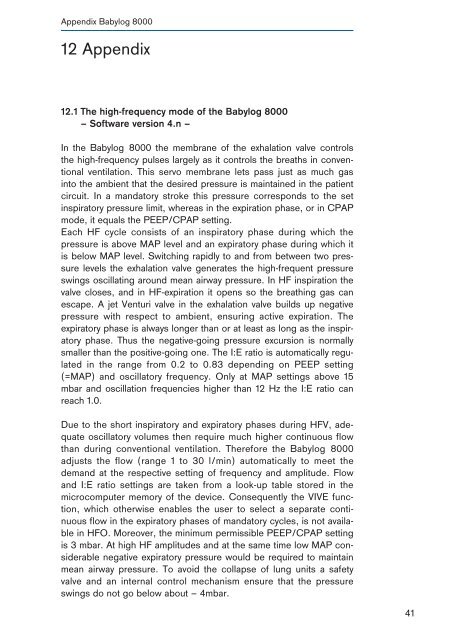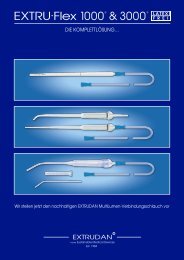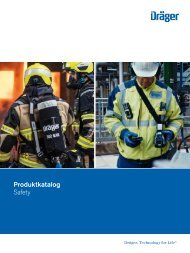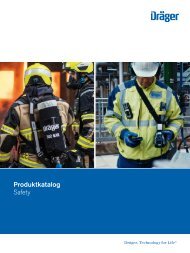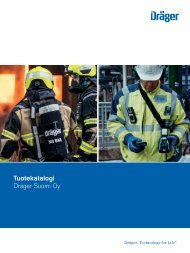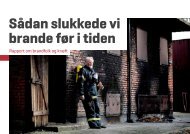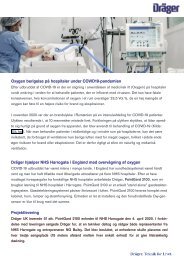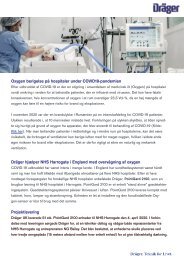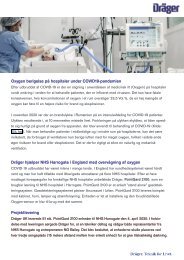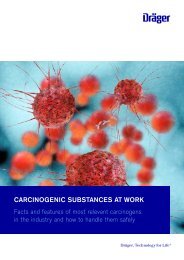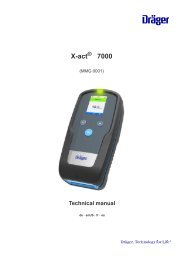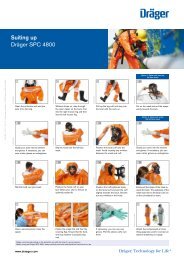High-Frequency Ventilation- Basics and Practical Applications
You also want an ePaper? Increase the reach of your titles
YUMPU automatically turns print PDFs into web optimized ePapers that Google loves.
Appendix Babylog 8000<br />
12 Appendix<br />
12.1 The high-frequency mode of the Babylog 8000<br />
– Software version 4.n –<br />
In the Babylog 8000 the membrane of the exhalation valve controls<br />
the high-frequency pulses largely as it controls the breaths in conventional<br />
ventilation. This servo membrane lets pass just as much gas<br />
into the ambient that the desired pressure is maintain ed in the patient<br />
circuit. In a m<strong>and</strong>atory stroke this pressure corresponds to the set<br />
inspiratory pressure limit, where as in the expiration phase, or in CPAP<br />
mode, it equals the PEEP/CPAP setting.<br />
Each HF cycle consists of an inspiratory phase during which the<br />
pressure is above MAP level <strong>and</strong> an expiratory phase during which it<br />
is below MAP level. Switching rapidly to <strong>and</strong> from between two pressure<br />
levels the exhalation valve generates the high-frequent pressure<br />
swings oscillating around mean airway pressure. In HF inspiration the<br />
valve closes, <strong>and</strong> in HF-expiration it opens so the breathing gas can<br />
escape. A jet Venturi valve in the exhalation valve builds up negative<br />
pressure with respect to ambient, ensuring active expiration. The<br />
expiratory phase is always longer than or at least as long as the inspiratory<br />
phase. Thus the negative-going pressure excursion is normally<br />
smaller than the positive-going one. The I:E ratio is automatically regulated<br />
in the range from 0.2 to 0.83 depending on PEEP setting<br />
(=MAP) <strong>and</strong> oscillatory frequency. Only at MAP settings above 15<br />
mbar <strong>and</strong> oscillation frequencies higher than 12 Hz the I:E ratio can<br />
reach 1.0.<br />
Due to the short inspiratory <strong>and</strong> expiratory phases during HFV, adequate<br />
oscillatory volumes then require much higher continuous flow<br />
than during conventional ventilation. Therefore the Babylog 8000<br />
adjusts the flow (range 1 to 30 l/min) automatically to meet the<br />
dem<strong>and</strong> at the respective setting of frequency <strong>and</strong> amplitude. Flow<br />
<strong>and</strong> I:E ratio settings are taken from a look-up table stored in the<br />
microcomputer memory of the device. Consequently the VIVE function,<br />
which otherwise enables the user to select a separate continuous<br />
flow in the expiratory phases of m<strong>and</strong>atory cycles, is not available<br />
in HFO. Moreover, the minimum permissible PEEP/CPAP setting<br />
is 3 mbar. At high HF amplitudes <strong>and</strong> at the same time low MAP considerable<br />
negative expiratory pressure would be required to maintain<br />
mean airway pressure. To avoid the collapse of lung units a safety<br />
valve <strong>and</strong> an internal control mechanism ensure that the pressure<br />
swings do not go below about – 4mbar.<br />
41


